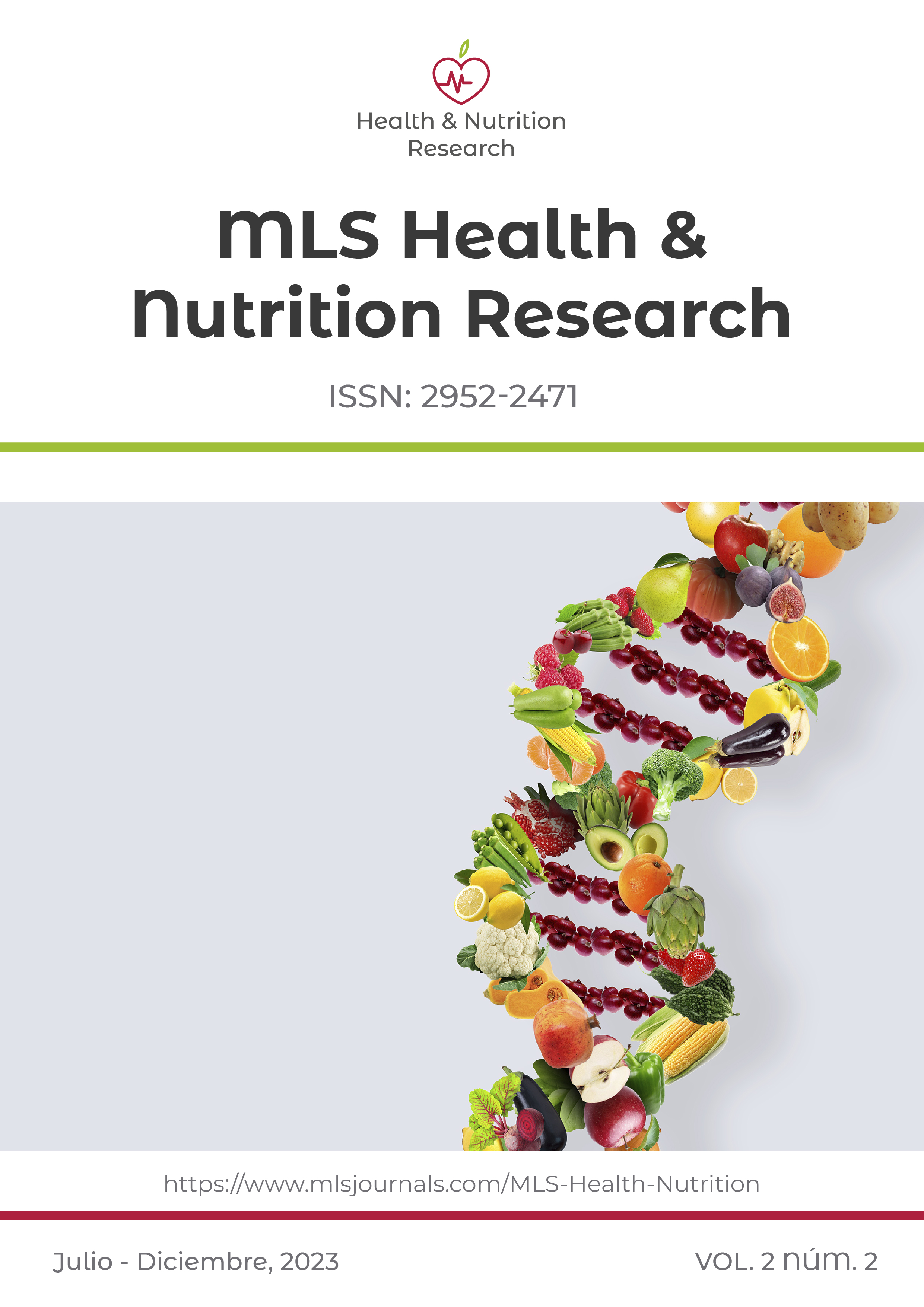Vol.2 No. 2 (2023)
Published 2023-12-19
Full Issue
The aim of this study was to evaluate the sensory characteristics and the physicochemical properties of high-protein yoghurt fortified with Andean lupin (Lupinus mutabilis) protein concentrate. Formulations with 0.5, 1 and 1.5% of protein concentrate (containing 69% proteins, 4% fats and 21% carbohydrates) were obtained using a commercial starter culture and cow´s milk. The acceptability for colour, flavour, texture and taste was evaluated with a hedonic 9-point scale and 100 adults aged between 18-59 years. Participants selected the attributes more convenient to describe the yoghurts using the CATA (Check-All-That-Apply) test. The chemical composition, pH and acidity as well as the textural properties were evaluated. The yoghurt with 0.5% lupin protein concentrate was acceptable according to the sensory attributes. The protein concentrate, when adding at 1 and 1.5%, increased the bitterness, the residual taste and astringency of formulations. The pH values and lactic acid content in fortified products were similar to the control sample, however the syneresis was lower. The yoghurt with 0.5%. The addition of fruits, cereals or honey could be a strategy to increase the acceptability according to participants´ perceptions. The use of yoghurt as dressings in salads could also be a novel form of consumption.The set-type yoghurt fortified with Andean lupin proteins could be alternatives to increase the daily intake of proteins, however some sensory properties should be optimized
Dietary diversity is a measure of food access and consumption in a household, and it can be triangulated with other information to give a holistic picture of the state of food security and nutrition in the community or over a wide area. The objective of the research was to learn about the levels of sweet potato production and dietary diversity of rural populations in Nampula and Zambezia, Northern Mozambique. Survey data showed that in general 17% of farmers cultivate sweet potatoes, of which 20% mentioned having grown the orange-fleshed varieties.
Maternal nutrition is a determining factor in the proper development of pregnancy. One of the micronutrients that becomes especially important during this stage is vitamin D. The primary role of vitamin D is the regulation of calcium homeostasis, although it also plays a significant role in pregnancy development. It has been reported that vitamin D deficiency during this stage is associated with adverse outcomes such as preterm birth, fetal problems, or preeclampsia. The aim of this bibliographic review is to analyze the implication of vitamin D in the proper development of pregnancy. Articles from scientific journals indexed with an impact factor ≥1.5, published in English or Spanish in the last 5 years, were selected. PubMed, Sciencedirect, and Cochrane were consulted. Low concentrations of serum vitamin D were associated with adverse outcomes such as gestational diabetes or preeclampsia. Adequate levels showed beneficial effects on offspring development, improving the immune system or preventing bone fractures; however, they did not show benefits in neonatal growth. High doses of vitamin D supplementation were found to be safe. It was also concluded that vitamin D supplementation with doses of up to 4000 IU/day would be safe for both the mother and the fetus.
The aim of the present study was to investigate which diet is the best option to treat polycystic ovarian syndrome (PCOS). A bibliographic review was carried out. Official web sites and documents were taken into consideration. Nevertheless, for the analysis of studies, just articles from indexed magazines were used. These articles were published between 2015 and 2022, and they were selected form the database PubMed. At the end, 19 articles were used. All of the discussed diets can be helpful to lose weight in case of overweight or obesity. In case of inflammation, the Mediterranean diet may be the best option because of its antioxidant value. When SOP coexists with diabetes, both the DASH diet and the ketogenic diet can be of great help. A low glicemic diet can be useful to improve the levels of sex hormones and the lipid profile in women with PCOS. More investigations and studies with bigger samples are needed to confirm the results shown in this work. However, the information exposed in this review points out that an anti-inflammatory diet, losing weight, in case it was necessary, and controlling the carbohydrates intake, is necessary to improve the symptomatology and health of women with PCOS.
The prevalence of metabolic syndrome is increasing due to overeating and sedentary lifestyles. It is a risk factor for the development of diabetes mellitus II and cardiovascular disease. Effective and long-lasting weight loss involving lifestyle changes is necessary for its treatment. Continuous calorie restriction is the most commonly prescribed method of weight loss. However, people often regain the weight lost. Intermittent fasting protocols are being investigated as a safe and effective treatment for weight loss and improvement of cardiometabolic health, therefore, the aim of this research is to define the effects of intermittent fasting versus continuous calorie restriction for the control of cardiometabolic parameters in obese adults with metabolic syndrome. A literature review was carried out in which articles from scientific databases were consulted and analysed. Specifically, 10 articles published in the last 10 years belonging to PubMed were analysed. Intermittent fasting induces a weight loss equivalent to continuous calorie restriction; however, the loss of fat mass is greater when intermittent calorie restriction is performed. Changes in glucoregulatory markers are contradictory and inconclusive. Regarding the lipid profile LDL-cholesterol and triglycerides decrease equivalently with both interventions, not affecting HDL-cholesterol levels. Intermittent fasting and continuous calorie restriction protocols have similar effects on cardiometabolic health. Intermittent fasting is a safe intervention nevertheless, there is a risk of hypoglycaemia in people treated with antidiabetics.












